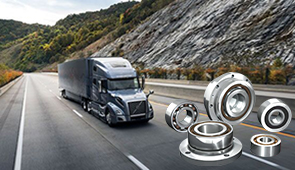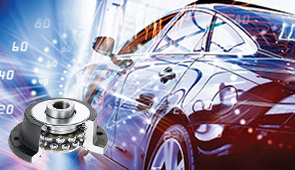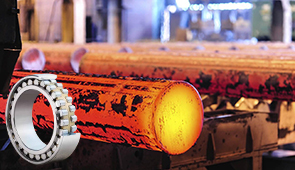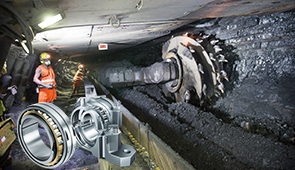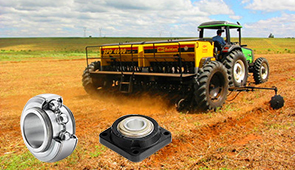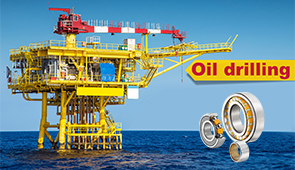Bushing vs Bearing: Choosing the Right Solution for Your Needs
When it comes to mechanical assemblies and moving components, the choice between bushings and bearings can significantly impact performance, efficiency, and longevity. Both solutions are designed to reduce friction and support motion, but their applications, advantages, and limitations vary widely. Whether you’re designing industrial machinery, automotive systems, or precision instruments, selecting the correct option is critical to ensuring optimal functionality and cost-effectiveness. This article provides a comprehensive comparison of bushings and bearings, equipping you with the knowledge to make an informed decision based on your specific requirements and conditions.
What is the Difference Between a Bushing and vs Bearing?
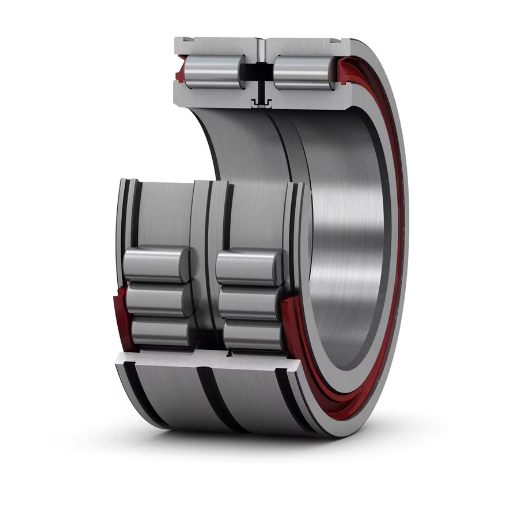
Understanding Bushing Characteristics
A bushing (plain bearing) is a simple, sleeve-like part whose primary purpose is to reduce friction between two surfaces, typically a rotating shaft and a stationary support structure. Bushings work by keeping a lubricating film layer separate between these surfaces, this prevents direct contact between the metals which reduces wear. They are most effective and widely used in low-speed operation applications, with moderate loads and limited aspects of rotation and angular movement.
One of the distinctive attributes of bushings is their material and broad functionality. In order to achieve self-lubricating properties, bushings are commonly manufactured from bronze, composite, or polymer materials. This attribute becomes particulary useful in instances where continuous lubrication cannot be supplied. For engineering problems that need low-maintenance, reliable components with a degree of vulnerability to misalignment and minimal adjustment, bushings provide an effective and inexpensive answer.
Say, for example, a system experiences a combination of high-speed rotation and greatly increased axial load, bushings might pose an issue due to increased frictional and thermal forces. Other than that, slip bushings’ simple construction, low weight, low price, and uncritical contamination resistance make them useful in automotive parts, manufacturing machines, electrical devices, etc. Knowing these features, engineers determine when to optimally include bushings in their design.
Exploring Ball Bearing Features
Ball bearing assembly is very important in mechanical systems as it minimizes the friction between the rotating shaft and the housing. They do so by utilizing specially crafted spherical parts which roll under load to reduce frictional energy expenditure. Balanced in both axial and radial load capacity, ball bearings are used universally across different sectors.
A ball bearing’s key strength rests with its composition. Bearings are usually made of high-quality steel, ceramic, or the blend of both which offer extreme durability, high temperature resistance, and corrosion resistance. Used under extreme conditions or severe abrasion, bearings can also be further enhanced by adding some specialized coating or undergoing particular treatment depending on the application.
Other than deep groove ball bearings, ball bearings come in different configurations, such as self-aligning and angular contact bearings. Each configuration is tailor-made to fulfill certain criteria. For instance, deep groove ball bearings are designed for high-speed applications that do not require extensive maintenance. Angular contact variants excel in the application of functioning under combined loads. Depending on the load to be carried, the operational speeds, alignment of the bearing, and surrounding conditions, engineers choose the right type of ball bearing to install, ensuring reliability and efficiency.
Key Differences in Friction and Durability
The design, lubrication, and working conditions all play crucial roles in determining the friction levels in each ball bearing. Wear and friction for any piece of machinery should be and are minimized on its “deep groove ball bearing.” This is because the contact geometry is skillfully done, and the lubrication systems are optimized for best results. Hence, this component works best for high-speed applications. Angular Contact Ball Bearings support combined axial and radial loads. Because of this feature, the friction is still slightly higher due to greater internal contact forces.
Radial load placed by environment determines how deep groove ball bearings are placed. Under light to moderate radial loads, these bearings are most durable. Angular contact bearings, however, are more commonly used for areas with higher combined loads or misalignment conditions. Their structural capability allows them to manage stress more effectively without compromising their lifespan.
Every bearing type has its restrictions, depending on how it is used. Deep groove bearings excel in low-maintenance, high-speed environments, but poorly handle variable axial loads. On the other hand, angular contact bearings are more durable under mixed load conditions, though they require specific alignment and lubrication to manage friction effectively. These differences are important for choosing the correct bearing type, which will ensure efficiency and prolong the life of mechanical systems.
When to Use a Bushing or a Bearing?
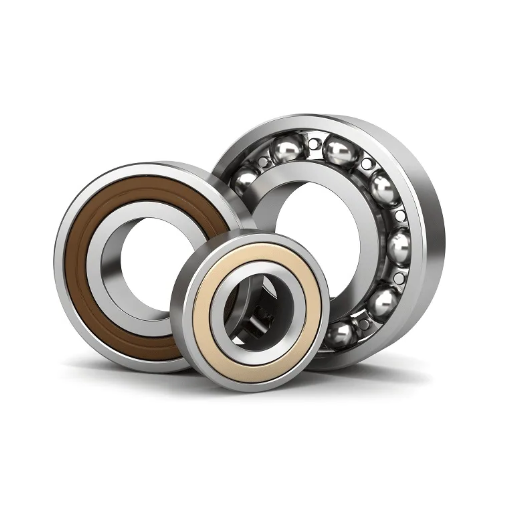
Factors to Consider for Bushing vs Bearing Applications
Analysis of the bushing and bearing options requires diverse and critical mechanical system factors to be reviewed to guarantee an effective and lasting solution. These factors include bearing and bushing maintenance, the load capacity, the operating speed, and bushings environmental conditions.
- Load Characteristics: Bushings, as opposed to bearings, are more effective in withstanding a high static load. Due to their large area, they effectively distribute the load, excelling in low-speed applications. Rolling element bearings are made to accommodate dynamic and radial loads; they dominate high-speed applications where accuracy and minimal resistance are essential.
- Speed and Friction: Bearings are made to withstand high speeds due to their efficiency in minimizing friction with rolling contact surfaces. Bushings, in contrast, employ sliding motion and are only suitable in lower speed systems and oscillating motion without continuous rotation.
- Environmental Conditions: Contaminants like dirt, dust and moisture harshly affect bearings but self lubricating materials such as bronze and polymer composites make bushings more durable. Bearings work great in clean environments, but need additional sealing or constant lubrication to prevent contamination damage.
- Material and Temperature Compatibility: Bushings can be designed with heat-shielding materials making them useful for parts such as suspension systems in automobiles or positioning them near hot machinery. Bearings, on the other hand, need careful control of lubricating fluids and their materials to keep them thermally stable.
With these considerations, engineers can choose whether their application needs a bushing’s simplicity and strength versus a bearing’s precision and performance, balancing the mechanical and environmental requirements.
Impact of Load and Speed on Choice
Application requirements are best defined by the operational load and rotational speed from the perspective of a bushing or bearing. Bushings perform better in high load, low working speed operational environments. As a result of their simple design and greater surface area for load distribution, they are particularly useful for heavy machinery, pivot point devices, structural components, and other such mechanisms where excessive wear due to constant motion is not a primary concern.
Bearings, however, are best for high-speed applications – friction and precision being critical. Ball and roller bearings are example of this since they have rolling elements, which greatly reduce direct surface contact and therefore energy loss, that can be achieved even at high rotational speeds. The downside is that their usefulness diminishes under extreme static loads; concentrated stress can cause deformation or even failure.
Load and speed are inextricably linked to thermal considerations as well. For example, bearings produce heat because of friction at higher speeds, so they need some form of lubrication and possibly cooling. Due to their solid material composition, bushings can withstand heat quite well; however, other circumstances such as constant motion might lead them to excessive friction problems.
Finally, an engineer has to analyze the requirements of the particular application on a specific basis, balancing trade-offs between load bearing and rotational speed to make suitable decisions. An appropriate choice between a bushing and bearing can be made as long as the mechanical stresses and operational conditions are aligned with the performance and endurance of the system.
Types of Bearings and Bushings
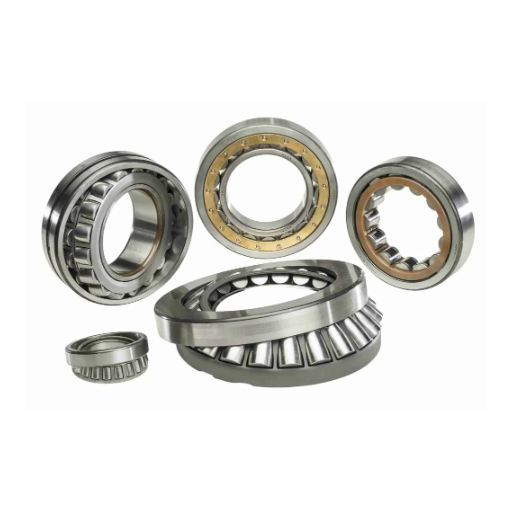
Understanding Thrust Bearings and Roller Bearings
Every mechanical system has specific components, like thrust bearings and roller bearings, which help in effective functioning. Each of these parts is structured to handle a particular load type and operational functionality. Thrust bearings tackle axial loads, which have the force aligned parallelly to the rotation axis. Their usage emerges in areas such as automobile transmissions, turbine engines, and also in formidable industrial machines. Their design is such that friction is minimized while simultaneously high load-bearing capabilities are maintained, which ensures seamless operation when axial forces are applied. Depending on the precision required by the system, some Ball thrust or tapered thrust bearings can be incorporated.
Where thrust bearings take care of axial loads, roller bearings are made to handle radial loads. The opposing force of the rotation encompasses both axial and radial capabilities. Roller bearings differ by the presence of cylindrical, spherical, or tapered rolling elements located between the inner and outer rings. These components assist in stability while also helping in Rotational friction under high load conditions. A few of the many types of roller bearings are cylindrical roller bearings, spherical roller bearings, and tapered roller bearings, all of which are optimized for set performance values like speeds, load, and tolerance on alignments.
Both thrust and roller bearings are manufactured using precise engineering techniques from materials like chrome steel or ceramic which aid in enduring heat, wearing, and abrasions. The choice of lubrication, whether oil or grease, also plays an important role and modern use of synthetic lubricants has significantly increased lifespan. Selecting the right bearing type requires consideration of the load direction, rotational velocity, alignment precision, and application-specific details. Assessment and deep reflection on these aspects will provide system efficiency alongside longevity and dependability.
Special Features of Self-Lubricating and Bronze Bushings
Self-lubricating bushes are designed to function without the application of outside lubrication, greatly decreasing maintenance needs. These particular bushings usually contain compounds such as polytetrafluoroethylene (PTFE), graphite, or any other embedded lubricants that provide for smooth and dependable operation over time. The inherent build helps to avoid lubricant loss because of failure in its design, especially in places with high contaminating elements or in cases of infrequent maintenance. Adopting these self-lubricating bushings improves up uptime of machines, decreases operating costs, and improves efficiency.
On the contrary, bronze bushings are extremely popular for their strength and range of applications. They are composed mainly of copper and tin alloys, which ensures these bronze bushings have good wear resistance and load-bearing capacity. Due to their thermal conductivity and corrosion resistance, bronze bushings find application in harsh environments such as in marine equipment and industrial machinery. When alloyed with lead or aluminum, these materials gain even more desirable characteristics, such as better machining and higher performance under stress.
Self-lubricating and bronze bushings accomplish budget-friendly and efficient solutions exceptionally well. Maximum use of their features should consider factors such as environmental conditions, operating temperatures, and load for optimal use.
How to Choose the Right Bearing or Bushing
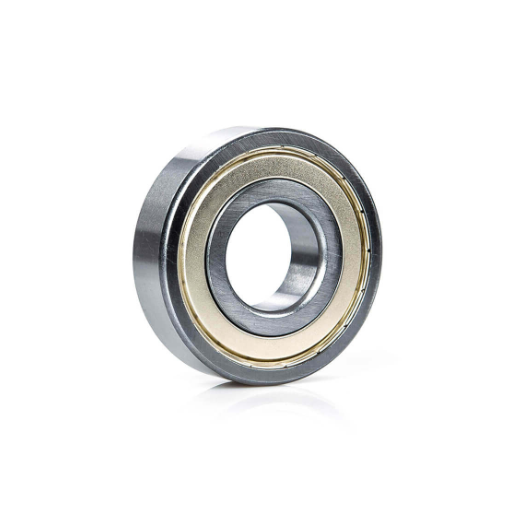
Evaluating Bushing Material and Bearing Used
As with any mechanical component, choosing the appropriate bushing material and bearing type requires detailed analysis of operating conditions in addition to technical requirements. For example, the load limit, speed, and even the environment must match the characteristics of the used materials. Forged alloy bronze bushings are a common selection for high-load applications due to their high durability and ability to withstand compressive forces. On the other hand, polymer-based bushings might be ideal for low-speed, lightweight applications due to their corrosion resistance and self-lubrication.
Consideration of thermal stability is also crucial, especially for the material’s performance in the case of expansion or degradation due to high temperatures. Metal-polymer composite bushings are excellent in such situations as they are stronger than metal yet have low friction. With bearings, the issue of whether lubrication can be applied or whether self-lubricating materials are required can greatly impact operational productivity and lifespan.
Maintenance of Systems is increasingly adjusting wear rates, material life, and maintenance scheduling based on predictive data modeling. The ability of these systems to perform under extreme conditions is further enhanced by innovations in bearing coatings like diamond-like carbon (DLC) or molybdenum disulfide (MoS2), as they reduce friction and inhibit corrosion. Selecting an optimum combination of bushing material with bearing type is a meticulous process that must consider not only applied research but recent breakthroughs in engineering materials science.
Assessing Environmental Factors and Corrosion Resistance
The bushing and bearing system’s performance and lifespan are critically dependent on the operational environment. An assessment must be made on temperature changes, moisture, abrasive particles, and chemical contaminants. Materials used in high-temperature applications need to have outstanding thermal stability, which can include ceramics and some alloys. Components that experience high moisture also require great corrosion resistance to be reliable. For example, bearings made of stainless steel and polymers are routinely used in highly corrosive environments due to their non-oxidizing and non-degradable properties.
Moreover, surfaces can be enhanced through advanced treatments and coatings such as zinc-nickel plating and/or anodization to improve material performance under extreme conditions. Engineers also need to factor in the possibility of galvanic corrosion, which is often prominent in assemblies involving dissimilar metals, and incorporate solutions by choosing compatible materials or using insulating barriers.
Achieving these goals is important in accurate lifecycle performance predictions. Through computer simulations with finite element analysis (FEA) alongside lab tests, engineers can predict how components behave in different environmental conditions, optimally selecting materials for maximum efficiency. Data-driven approaches like these lower the risk of unforeseen failure, increase the effectiveness of designs, and meet the modern industry standards for sustainable engineering.
Advantages and Disadvantages of Bushing vs Bearing
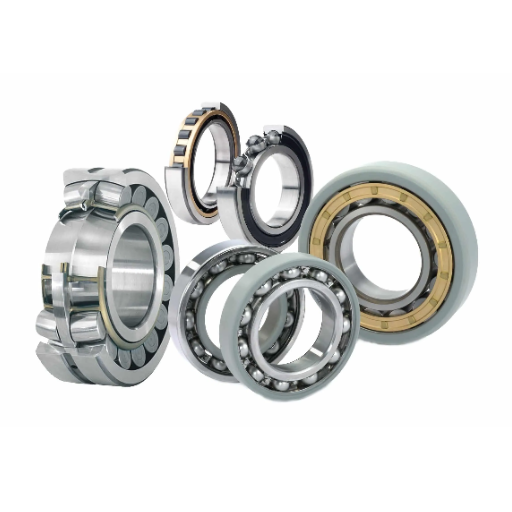
Pros and Cons of Bushing in Rotational Applications
The use of bushings in rotational machinery tends to provide some benefits as well as some limitations, depending on the operational conditions and the design criteria.
Advantages
- Cost Effectiveness: Rolling bearings are often more expensive compared to bushings and that is due to their complex structure with numerous parts. Consequently, these can be beneficial in projects where spending is limited.
- Low Maintenance: Self-lubricating bushings, which are made of composite materials such as PTFE or bronze, minimize external maintenance since they drive. This results in lower costs associated with ongoing operations.
- Compact Design: Bushings Primarily allow for a reduction in the size and weight of the components, which can allow for more streamlined designs without affecting the performance, particularly in limited spaces. Thus improves the performance of the system as a whole.
- Noise Dampening: Owing to the sliding motion instead of rolling contact, bushings as compared to the latter produce less noise and vibrations which can be a useful feature in places where acoustic performance is vital.
- Resistance to Contamination: Under certain operational conditions, dust, dirt, or debris can be bushing bearings provided that proper material is used. Thus, protect the bearings which usually need sealing arrangements from.
Disadvantages
- Higher Friction: When it comes to rolling bearings, bushings usually have higher friction brakes. This is unfavorable due to the increased energy losses and possibly high-wear rates in high-velocity applications.
- Limited Load and Speed Capacity: While bushings do perform optimally at moderate loads and speeds, their operational extremes have limits. Their lifespan is diminished with high-speed operations due to excessive heating.
- Dependency on Material Properties: Selection of a bushing dictates how well it performs. Some metal bushings are susceptible to corrosive wear in humid environments, whilst polymer ones will degrade under high temperature and chemical exposure.
- Potential for Stick-Slip Effects: More specific bushings can display stick-slip phenomena, a motion where static friction and kinetic friction intermittently alternate. This leads to uneven movement, which is undesirable in applications where smooth motion is critical.
An assessment of these considerations allows engineers to decide if bushings meet the mechanical, economic, and strategic objectives of the system in question. With advancements in materials and optimized lubrication methods, the operational scope of bushings continues to increase, which enhances their reliability if used carefully.
Benefits and Drawbacks of Bearings in High-Speed Environments
The use of bearings in high-speed operating environments is always accompanied by the consideration of their associated performance metrics. Bearings assist in reducing friction, providing smooth rotational movement, and balancing dynamic loads. Bearings are greatly impacted by: the application of speed, material composition, lubrication used, thermal management technique implemented, and overall design accuracy of the bearing. A benefits and drawbacks evaluation is presented in a detailed list below:
Benefits:
- Friction and Heat Generation Reduction: The application of high precision bearings aids in achieving contact friction minimized and reduced contact friction. Heat Generation is also attenuated which enables smooth operational stability and sustained bearing lifespan. Hybrid ceramic bearings are further able to generate 30-50% less heat relative to traditional steel bearings.
- Improved Load-Carrying Capacity: Increased load carrying capacity serviced by advanced materials like roller steel are listening topic treated by new designs of bearings allowing to carry out the dynamic radial loads properly keeping bearing structure intact at elevated speeds.
- Enhanced Operational Precision: Among the prominent advantages is the accuracy offered by high-speed bearings, which stems from the application of close tolerances enabling low vibration and smooth rotation. This is key to the aerospace and micro turbines industries where accurate need is equally high.
- Extended Lubrication Durability: Modern systems of lubrication, like solid oil and grease with controlled viscosity, maintain operational effectiveness for a certain period of time and at the same time decrease the wear and tear of the system. For example, some lubricants designed for high temperatures function well over 100,000 RPM.
- Scalability for High-Speed Systems: The range of electric vehicles and even centrifuges can utilize bearings designed specifically for high-velocity systems, hence providing a wider scope of design and performance scalabilities.
Drawbacks:
- Heat Build-Up in Extreme Conditions: Even the most technologically advanced bearings are susceptible to heat accumulation in the vicinity of very high rotational speeds. If not properly mitigated, this condition can result in creep or material fatigue.
- Cost of Advanced Materials: Non-standard speed bearings tend to incorporate sophisticated materials such as glass-filled polymers, ceramics, or steel alloys, which drastically increase their cost relative to standard options.
- Lubrication Wear Breakdown: In the absence of proper maintenance, using high speeds for a prolonged period in operation can lead to lubricant breakdown, which reduces friction but increases overheating alongside rapid wear on the constituent parts.
- Noise and Vibration: If not damped properly, excessive vibration at high speeds can cause resonance issues that could degrade the performance and reliability of the system as a whole.
- Complex Installation and Maintenance: As with all intricate designs, the requirement for alignment precision and routine servicing increases the stoppage time of the machinery which makes the system as a whole less efficient.
An evaluation of the advantages and disadvantages ensures that the bearings are optimized to the highest standards while meeting the desired objectives in speed-centric environments.
Comparing Vibration and Smooth Operation
While analyzing high-speed bearing systems, the interaction of vibration and smooth operation is a key focus area of further analysis. The majority of bearings are likely to experience increased vibration levels because of unbalanced loads, sub-optimal lubrication, and surface wear, which can contribute to mechanical inefficiency and even early failure. Disrupted vibration leads to loss of precision within machines, which subsequently causes heat and noise, which must then be managed.
On the other hand, smooth operation is achieved when there is proper bearing alignment, suitable lubrication, and tolerances of operational materials in the system. Reduction of vibration and smooth operation enhancement is facilitated by the growing adoption of advanced technologies, including vibration analysis sensors and real-time monitoring systems. Comparative data demonstrate that systems with effective damping mechanisms show reduced vibration amplitude by 30%, enabling a longer bearing lifespan and enhanced performance in high-speed conditions.
Predictive maintenance combined with regular condition assessments improves reliability while troubleshooting the balance between vibration control and smooth operation. High-speed machinery reliability and safe operation are directly influenced by the analysis balance. All approaches taken for smooth operation should start with system design, material selection, and continuous system monitoring.
Frequently Asked Questions (FAQ)
Q: What is the primary difference between bushings and bearings?
A: The primary difference between bushings and bearings lies in their design and application. Bushings are generally simpler, consisting of a single sleeve that provides support and reduces friction between moving parts. Bearings, on the other hand, are typically more complex, incorporating elements like balls or rollers to handle radial and axial loads more efficiently.
Q: When should I use bushings instead of bearings?
A: Bushings are typically used in applications where loads are light and the motion is simple. They are often preferred when the need is to reduce friction between moving parts at a lower cost, as bushings tend to be less expensive than bearings. They are suitable for oscillating or sliding motions.
Q: What factors should I consider when choosing between bearings and bushings?
A: When choosing between bearings and bushings, consider factors such as the load capacity, the type of motion (rotational or linear), environmental conditions, maintenance requirements, and cost. Bearings offer higher precision and can handle heavier loads than bushings, while bushings are more economical and require less maintenance.
Q: How do sleeve bearings differ from other types of bearings?
A: Sleeve bearings, also known as journal bearings, differ from other types of bearings, like ball or roller bearings, in that they consist of a single sleeve that provides a surface for rotational motion. They are used to reduce friction between moving parts and are ideal for applications with moderate speeds and loads.
Q: Are plastic bushings suitable for heavy-load applications?
A: Plastic bushings are generally not recommended for heavy-load applications due to their material limitations. They are best suited for light to moderate loads and environments where corrosion resistance and low maintenance are important. For heavy loads, metal bushings or bearings are preferable.
Q: What are the advantages of using needle bearings?
A: Needle bearings offer high load capacity and can handle radial loads more effectively due to their design, which includes long, thin rollers. They are ideal for applications with limited radial space and where high precision is required.
Q: How do rod end bearings function in mechanical systems?
A: Rod end bearings, also known as heim joints, are used to provide a pivot point in mechanical systems. They allow for angular motion and are often used in applications where alignment and movement are required, such as in steering linkages and control arms.
Q: Why might bearings be preferred over bushings in some applications?
A: Bearings may be preferred over bushings in applications where high precision, reduced friction, and the ability to handle heavier loads are required. Bearings, such as ball or roller bearings, are designed to minimize friction between moving parts and provide better support for radial and axial loads.
Q: What role do friction and wear play in choosing between bushings and bearings?
A: Friction and wear are critical factors in choosing between bushings and bearings. Bearings are designed to reduce friction and wear more effectively, making them suitable for high-speed and high-load applications. Bushings, while more economical, may wear out faster under similar conditions and are typically used where such demands are lower.
UCTH213-40J-300 with Setscrew(inch)
CNSORDERNO: Normal-duty(2)
TOGN: UCTH213-40J-300
SDI: B-R1/8
SD: 2 1/2
UCTH212-39J-300 with Setscrew(inch)
CNSORDERNO: Normal-duty(2)
TOGN: UCTH212-39J-300
SDI: B-R1/8
SD: 2 7/16
UCTH212-38J-300 with Setscrew(inch)
CNSORDERNO: Normal-duty(2)
TOGN: UCTH212-38J-300
SDI: B-R1/8
SD: 2 3/8
UCTH212-36J-300 with Setscrew(inch)
CNSORDERNO: Normal-duty(2)
TOGN: UCTH212-36J-300
SDI: B-R1/8
SD: 2 1/4
UCTH211-35J-300 with Setscrew(inch)
CNSORDERNO: Normal-duty(2)
TOGN: UCTH211-35J-300
SDI: B-R1/8
SD: 2 3/16
UCTH211-34J-300 with Setscrew(inch)
CNSORDERNO: Normal-duty(2)
TOGN: UCTH211-34J-300
SDI: B-R1/8
SD: 2 1/8










